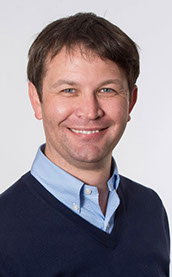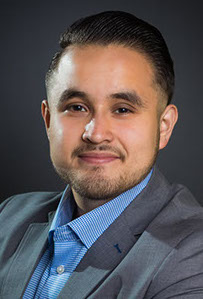
Inspiring the Diverse Leaders of Tomorrow
Throughout history every generation has brought new ideas, creativity, and advancements that have changed our world. National Grid’s history, through our legacy electric and natural gas companies, traces back more than a  century. We’ve seen first-hand how far society, specifically the energy industry, has come from the days of horse-drawn carriages pulling wooden gas mains to modern-day milestones with the commercial operation of the first offshore wind farm in the U.S.
century. We’ve seen first-hand how far society, specifically the energy industry, has come from the days of horse-drawn carriages pulling wooden gas mains to modern-day milestones with the commercial operation of the first offshore wind farm in the U.S.
Our industry depends on new generations of diverse minds taking fresh, creative approaches to solving society’s most complex energy challenges and continuing our path of advancement. And at National Grid, we need employees with expertise in the Science, Technology, Engineering and Math (STEM) disciplines to help us create the utility of the future in a way that is safe, affordable and reliable for the 20 million people we serve in New York, Massachusetts, and Rhode Island.
National Grid is doing its part to ignite passion in students to pursue STEM studies and inspire tomorrow’s future professionals. National Grid funds community and education programs with organizations such as City Year, Girls Inc., Junior Achievement, and FIRST LEGO League Rhode Island, among others, that focus on fostering an interest in STEM learning in students of all ages and backgrounds. From pre-kindergarten through college, we are collaborating with schools to provide teachers with the resources and curriculum to help develop STEM skills. We’ve participated in LATINO Magazine’s NUESTRO FUTURO Conference for several years, which brings together students to meet with thought leaders, elected officials, and educators to discuss the challenges and successes of bringing greater diversity into STEM education programs.
Our 15,000 employees in the U.S. also live and work in the communities we serve, and are actively volunteering in schools and civic organizations to share their knowledge and interest in STEM. Take Carlos Nouel, Vice President of our New Energy Solutions group. He moved from Venezuela nearly a decade ago, and has been working at National Grid for eight years, starting his career with us as a manager. Carlos often meets with students in the classroom and at our Sustainability Hub in Worcester, Massachusetts, where customers and families can come and learn about new future technologies and ways to conserve energy at home. Carlos enjoys helping to inspire students who could become our future workforce. Speaking in English and Spanish at community events, he tells stories of real-world projects that are making a difference, including the Buffalo Fruit Belt Neighborhood Solar Partnership, an urban model project for renewable solar energy that is helping low-income families in Buffalo, New York.
Much of this employee volunteer work happens through our 11 Employee Resource Groups (ERG). For example, National Grid’s Hispanic Professionals Association ERG created a tutoring program to help parents assist their children with homework assignments.
Providing promising careers to outstanding engineering students is another part of our commitment. Our signature Engineering Pipeline Program inspires promising high school students to pursue an education and career in engineering. Approximately 45 scholars from New York and New England are selected annually to experience a six-year developmental journey that includes job shadowing, internships, mentoring, and networking activities. Upon successful completion of the program and obtaining a four-year engineering degree, graduates are “fast tracked” for full-time employment at National Grid.
Every generation has the unique opportunity to inspire the next group of leaders. We are passionate about doing our part at National Grid, and look forward to what the next century will bring in energy advancements, thanks to the brilliant, diverse generations of future thinkers to come.
Keith Hutchison is the Senior Vice President, Human Resources & Chief Diversity Officer of National Grid.
Driving Force for Education
Workforce development takes a hands-on meaning with an innovative program to help prepare Latino youth for jobs in the exploding tech industry. The driving force behind it is Alberto Avalos, Innovation and Technology Program Manager at the Hispanic Heritage Foundation (HHF).
“It’s about making sure that the community has access to meaningful computer science education,” he said. “There’s an opportunity to make good money working in the tech industry or starting your own tech company, and I think it’s important that our community gets involved in technology to keep up with the times and make sure we have the skills and attributes to be able to contribute to the U.S. as we have always done historically in the Latino community.”
While Hispanics represent the nation’s fastest-growing population group, just a fraction of them are working in the tech world. That’s where the Code as a Second Language (CSL) initiative comes in. CSL focuses on introducing Latinos and other minorities to computer science to help close the skills gap among U.S. workers.
tech world. That’s where the Code as a Second Language (CSL) initiative comes in. CSL focuses on introducing Latinos and other minorities to computer science to help close the skills gap among U.S. workers.
Avalos, who had spent some time working in the Bay Area, said that he realized that the “opportunity gap,” or the lack of workforce development for Latinos, was largely due to a lack of access to technology and a lack of significant computer science education. Avalos thought the best way to tackle that problem was to bring the tech training directly to the community and help create a more diverse pool of talent.
He started Coding Jam, an interactive introduction to computer science, in the East Los Angeles neighborhood of Boyle Heights, which is about 90 percent Latino. For the first session nearly three years ago, Avalos, who started as a volunteer with a Hispanic Heritage Foundation, found a place with computers and asked several Latino employees at Google to help. Many more students than expected show up for that “jam session,” and within a year the sessions were held in ten cities.
Since then, the endeavor has ballooned into not just coding jams, but also coding academies, and coding bootcamps – in 25 cities and more than 40 schools nationwide, with the Hispanic Heritage Foundation – involving thousands of students. CSL is about the Latino community learning code just like they would any other language, Avalos said.
“Economically we can continue to uplift our community because of the opportunities that exist within technology, and to make sure that Latinos are well-represented in these companies. There aren’t a lot of people from our community right now working at these tech companies or starting their own,” he said.
Avalos considers the program to be not just about ensuring that young Latinos and Latinas have the necessary skills to succeed in a rapidly changing workplace, but also about helping to uplift the community: “This is about economic empowerment, social empowerment. At the end of the day, when people are more economically empowered, they’re more likely to be healthy, and when they are healthy, they are more likely to be civically engaged and be involved.”
There are plans to do the CSL program in Spanish, particularly targeting those who have recently moved to the United States. The goals is for them to “start adding value to the country immediately upon arrival,” said Avalos. He has also developed a network of Latino software engineers through HHF’s Latinos on the Fast Track network, which, among other things, provides mentors, networking, ongoing online instruction, mentors, and jobs at Fortune 500 companies.
Avalos says he gets a lot of inspiration from working with young Latinos, and firmly believes that the “next great innovator” will be a person from an underserved community. “They are knowledgeable, they are strong, and they are innovative,” he said. “They have demonstrated time and again that they have innovative ideas on how to solve the world’s most pressing issues, and we just need to continue to provide the platform for them to lead. My passion has always been thinking about how we can continue to uplift our community in an innovative and meaningful way.”
Programs like these that work with passionate young people also help to bridge the knowledge gap with applying to college. This is especially important for low-income and first-generation students who are seeking to access state grants, federal student loans, and future opportunities down the road.
For instance, many young men are unaware of the opportunities tied with Selective Service registration. Federal law says that virtually all young men living in the United States must register with Selective Service within 30 days of their 18th birthday, whether they are documented or not (immigration status is not shared). While there is currently no penalty for late registration, if a man fails to register by his 26th birthday, he can permanently lose eligibility for opportunities that can change his life for the better. These include federal student loans and many state-level assistance programs, job training programs, all jobs with the federal government, and plus many state and local government jobs as well. Failure to register can also complicate and slow down the process for immigrants seeking to become citizens.
Registering with Selective Service takes less than two minutes online at sss.gov. And men without social security numbers can pick up a form at most U.S. post offices or print out the online registration form at www.sss.gov and mail it in. That two minutes keeps a lifetime of opportunities open to these young men – allowing them to afford a college education, future job training programs, and good jobs.
By Patricia Guadalupe